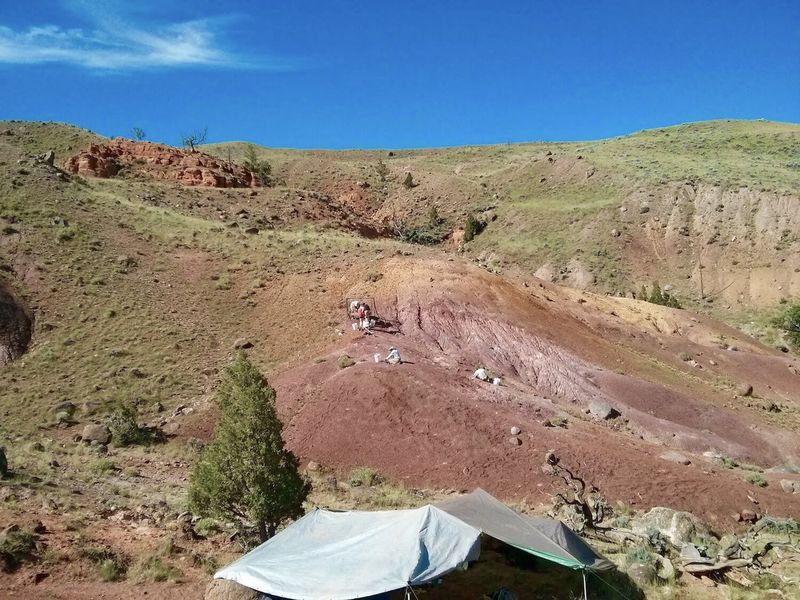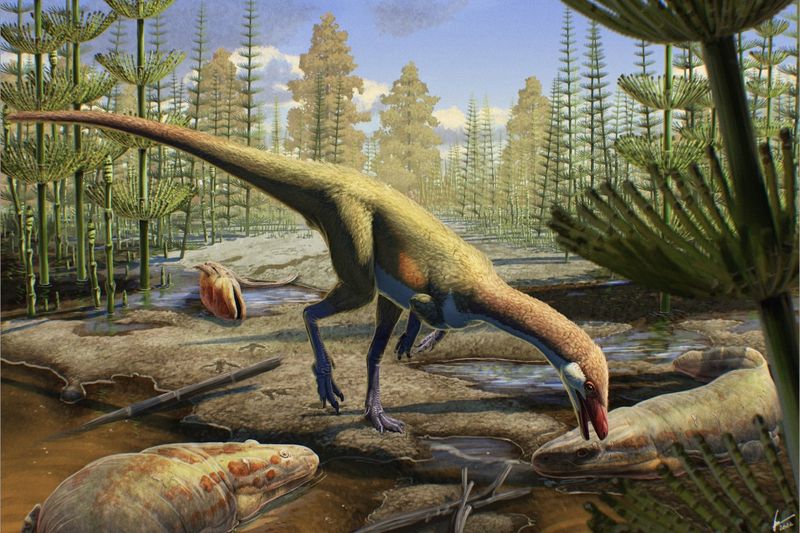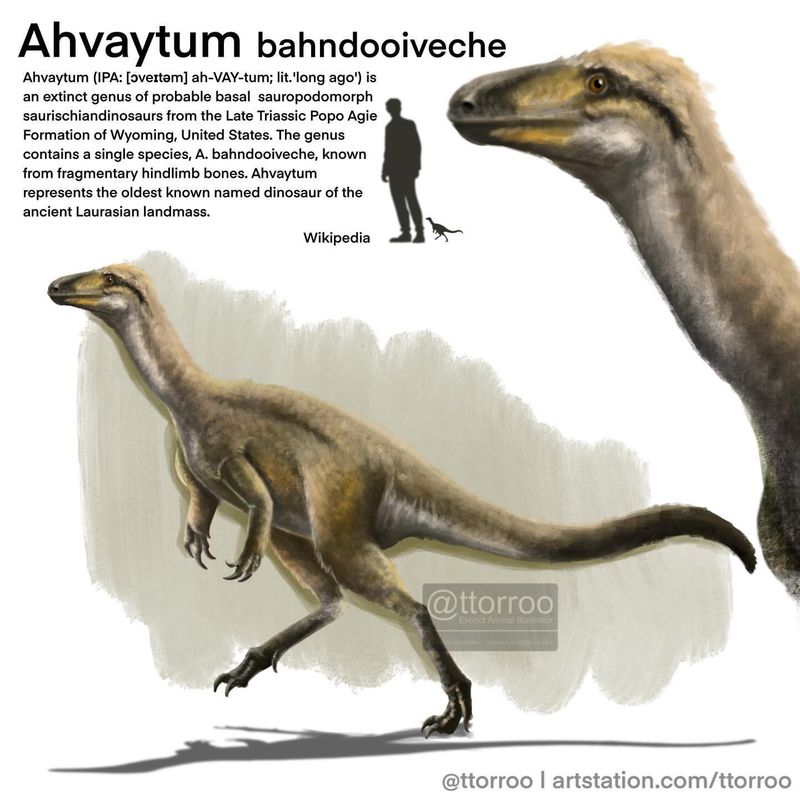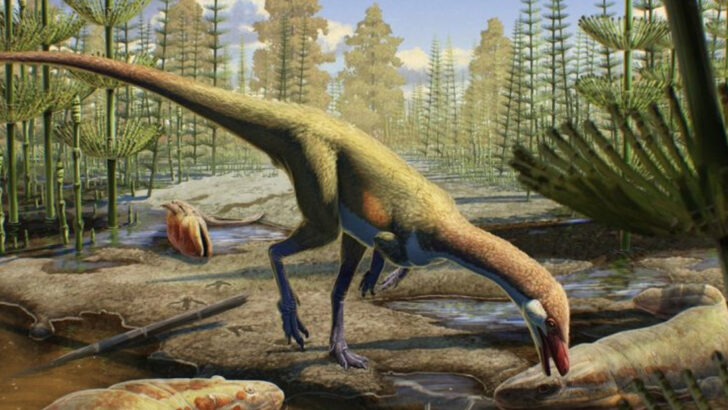Prepare to be amazed: the oldest dinosaur ever found in North America has just been unearthed in Wyoming. Meet Ahvaytum bahndooiveche, a creature that roamed the Earth 230 million years ago, challenging everything we thought we knew about dinosaur evolution.
Discovered in 2013 within the Popo Agie Formation, these fossils have been meticulously analyzed over the past decade. The findings, published earlier this year, reveal that Ahvaytum was a small, chicken-sized dinosaur with a long tail and beak-like mouth. This discovery pushes back the timeline of dinosaur presence in the Northern Hemisphere, suggesting they appeared millions of years earlier than previously believed.
What’s even more remarkable is the name itself. Collaborating with the Eastern Shoshone Tribe, scientists honored the rich cultural heritage of the region. “Ahvaytum” translates to “long ago,” and “bahndooiveche” means “water’s young man,” a term used for both dinosaurs and colorful native salamanders. This partnership bridges science and indigenous culture, enriching our understanding of both.
This discovery not only rewrites a chapter of natural history but also highlights the importance of cultural collaboration. Ahvaytum bahndooiveche stands as a testament to the enduring mysteries of our planet and the ongoing quest for knowledge.
The Site of Discovery

The fossil site in Wyoming presents a captivating snapshot of prehistoric life. Nestled in a region renowned for its rich geological history, it offers invaluable clues to Earth’s distant past. Paleontologists meticulously excavate the area, revealing layers of time hidden beneath the surface. The landscape, dotted with rugged rocks and sparse vegetation, speaks to a world long gone. Such discoveries not only fuel scientific curiosity but also inspire a sense of wonder about the planet’s evolutionary journey. Visitors to the site are often struck by the sheer scale and age of what lies beneath.
The Fossil’s Age and Origin

The fossil, dating back 230 million years, offers a glimpse into a world few can imagine. Its age places it firmly within the Triassic period, a time when dinosaurs began to dominate the land. Studying such ancient remnants allows scientists to piece together the evolutionary puzzle, tracing the lineage of life. The fossil’s preservation in rock tells tales of ancient seas and shifting tectonic plates. Each examination reveals more about the environment that shaped our planet’s history. Such artifacts are crucial to understanding the complex web of life that once thrived.
The Species Uncovered

This fossil discovery sheds light on a species that roamed Earth millions of years ago. The creature, belonging to the Triassic era, showcases unique adaptations that allowed it to thrive. Detailed studies of its structure reveal insights into its diet, behavior, and ecological role. The vibrant ecosystem it inhabited is reconstructed through painstaking research, offering a window into the past. Such revelations enhance our grasp of evolutionary biology, highlighting the diversity and resilience of life forms. The story of this species adds a new chapter to the annals of paleontology.
Paleontological Methods Used

Uncovering fossils requires a blend of traditional techniques and modern technology. In Wyoming, paleontologists employ a variety of methods to ensure precise extraction and analysis. Tools like brushes and picks are used alongside advanced imaging techniques, revealing fine details without damaging the specimen. This harmonious blend of old and new allows for comprehensive study, pushing the boundaries of what we know. The meticulous process not only safeguards these treasures but also deepens our appreciation for the scientific method. Such endeavors are vital for unraveling Earth’s historical tapestry.
The Fossil’s Impact on Science

This ancient fossil discovery is reshaping scientific narratives. Its age and condition provide fresh perspectives on evolutionary timelines, challenging established theories. As researchers analyze it further, new hypotheses emerge, prompting debates within the scientific community. The fossil serves as a catalyst for innovation, encouraging interdisciplinary collaboration and exploration. These findings not only enrich academic discourse but also captivate the public’s imagination. The story of this fossil underscores the dynamic nature of science—constantly evolving, questioning, and exploring the unknown.

